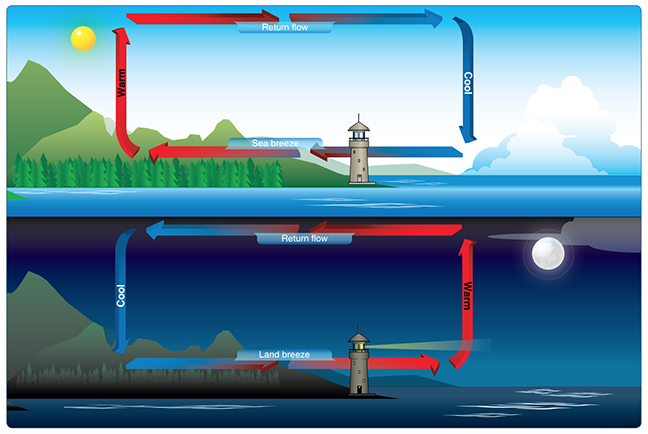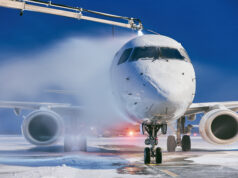The construction and design of an airport is not a trivial task. Planners consider a multitude of factors such as economic impact, potential for growth, location, size and type of land, and topography. Florida, for instance, is a hub for pilot training and boasts over 500 airports. A careful observation of runways at these airports across the coastlines of Florida yields runways aligned mostly perpendicular to the shore. So why did airport designers feel compelled to bestow pilots and travelers with some of the best views during takeoff and landing? The answer is the prevailing meteorological conditions (especially winds) at the proposed airport location. The overall takeoff and landing distances and climb gradient of an aircraft is enhanced by headwind. The orientation of runways is, in-part, determined by a climatological analysis of wind direction. Maximizing headwinds and minimizing crosswinds improves the performance and increases the safety margin for aircraft.
The obvious next question is why are the prevailing winds blowing perpendicular to the coastline? The answer to this question lies in the mesoscale meteorological circulation operating in the meso-β (20–200 km) scale known as a “Sea/Land Breeze.” The FAA’s Pilot's Handbook of Aeronautical Knowledge (PHAK) provides an illustration of the sea breeze circulation (see image below) and describes the circulation as a convective current. We may observe the development of these convective currents whenever there is an uneven heating of the Earth’s surface. While a sea breeze may be observed over a landmass that is adjacent to a relatively large water body, we may observe similar meteorological phenomena (albeit to a lesser degree) over contrasting land type (e.g., a large asphalt parking lot adjacent to an open field) and terrain (e.g., upslope and downslope winds across a mountain).

The specific heat (energy required to increase the temperature of a substance) for land surfaces is typically much less than water. Therefore, during the day the land heats up faster than a water body resulting in the necessary land-sea temperature difference to initiate and sustain a sea breeze. On a similar note, the land surface cools much faster than water resulting in a reversal of the circulation, a.k.a. land breeze. Other factors impacting the sea breeze include a stronger, larger-scale weather force (e.g., meso-α 200–1000 km or synoptic scale). For instance, the strength of the background winds can impact the location and development of a sea breeze. A strong wind from the east over Florida can propagate the east coast sea breeze inland while stalling the west coast sea breeze over the water, and a passing cold front may inhibit the development of a sea breeze.






















































